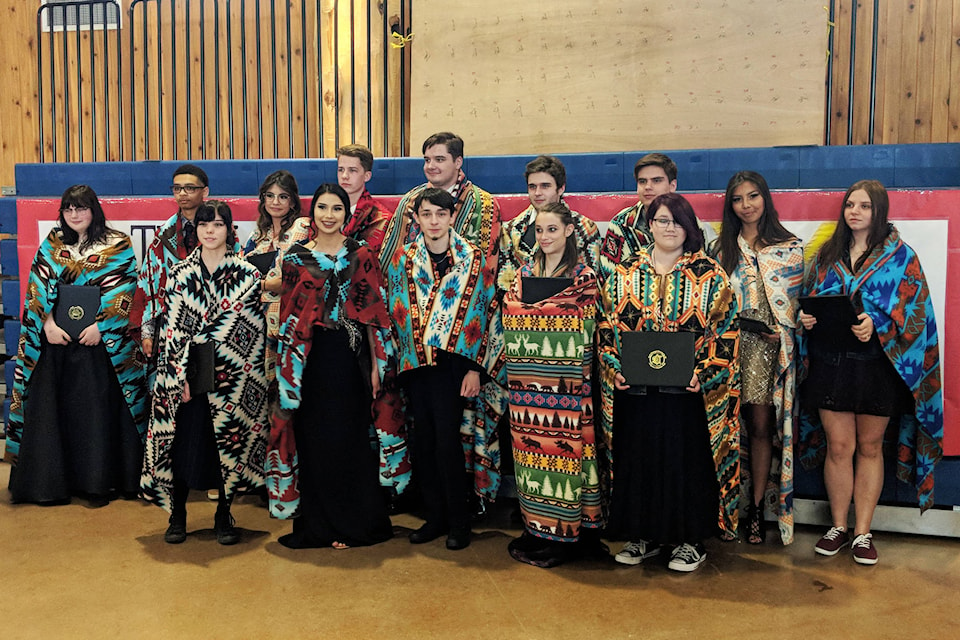Indigenous graduates from School District 83 were recognized for their achievement in their own ceremony on Wednesday.
Sixty-six students from across the Shuswap region attended the ceremony held at the Splatsin Centre on Wednesday, May 29. District dignitaries and representatives from indigenous communities were also in attendance.
Read more: Indigenous bidders for Trans Mountain pipeline await Ottawa decision
At a point during the ceremony the graduating students were wrapped in a blanket, a culturally significant gesture.
“It marks a milestone and is a reminder that as they move on… there’s lots of people who care about them and are cheering for them,” said Anne Tenning, district principal of Indigenous Education who was at the ceremony.
Four First Nations communities are a part of School District #83, with students from Adams Lake, Little Shuswap, Neskonlith and Splatsin. There is also a large population of Metis students and urban students that live off the reserve.
Read more: Kelowna RCMP’s ‘heinous’ treatment of Indigenous teen disclosing abuse ‘a pattern’
Read more: 60 per cent of all Canadian Indigenous languages are in B.C.
There are currently 99 students of indigenous ancestry who are registered in Grade 12. Although the district won’t know the graduation rate for indigenous students until the next school year, Tenning maintains healthy optimism for the numbers.
There is still work to be done for the district in terms of numbers of indigenous graduates to non-indigenous graduates.
“For a lot of the grads, they are often the first in their families to be graduating from the K-12 system. Not for all but definitely for some,” said Tenning. “Our graduation rates between those of indigenous students and the rest of our student population our grad rates are still lower, and it speaks to some of those challenges that still exist.”
@CameronJHT
Cameron.thomson@saobserver.net
Like us on Facebook and follow us on Twitter.
